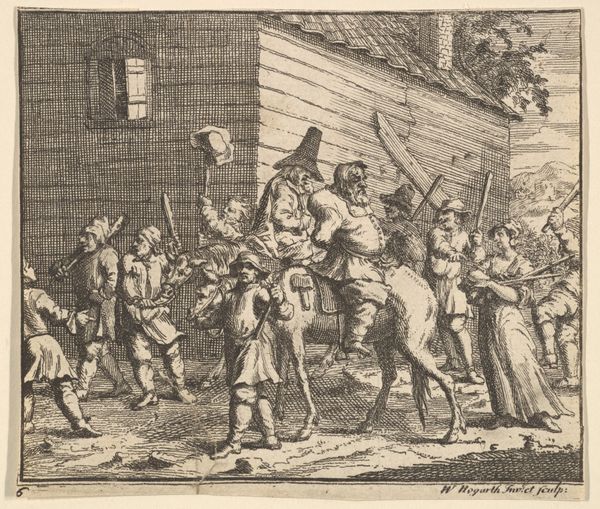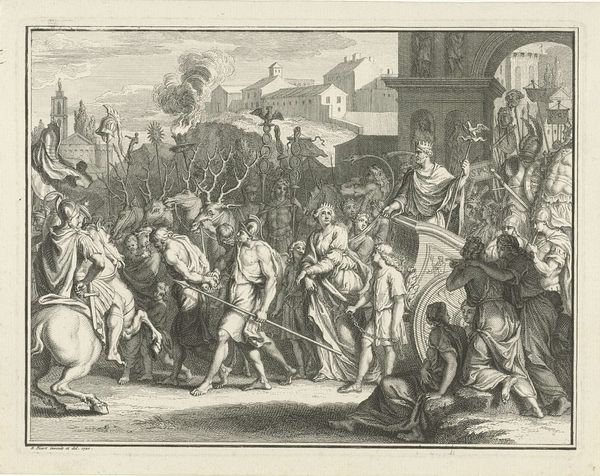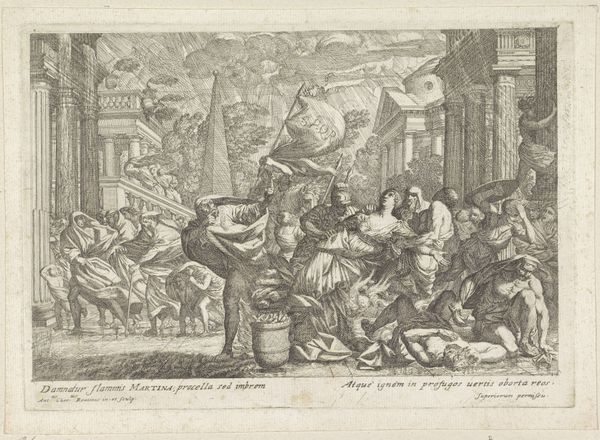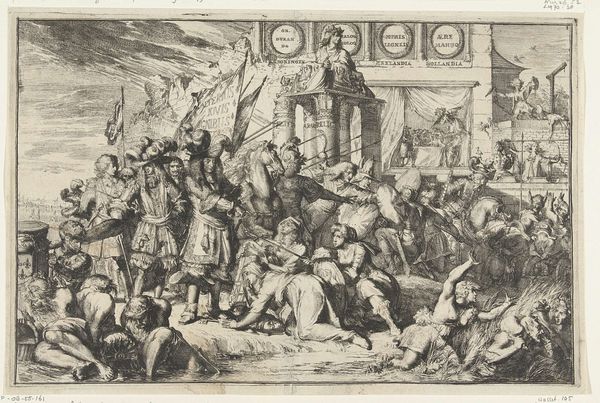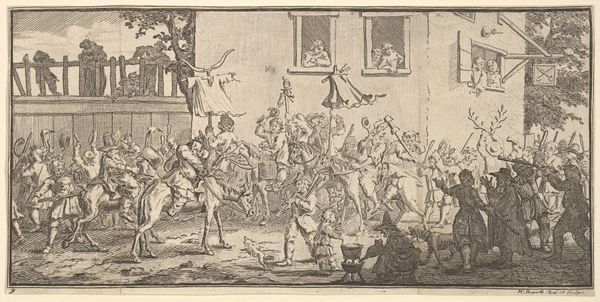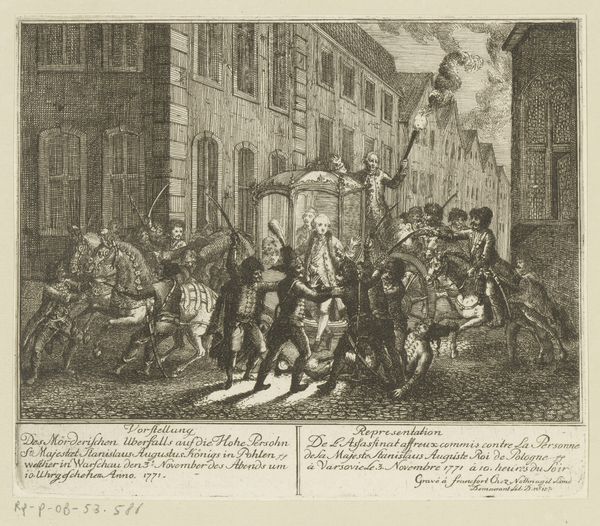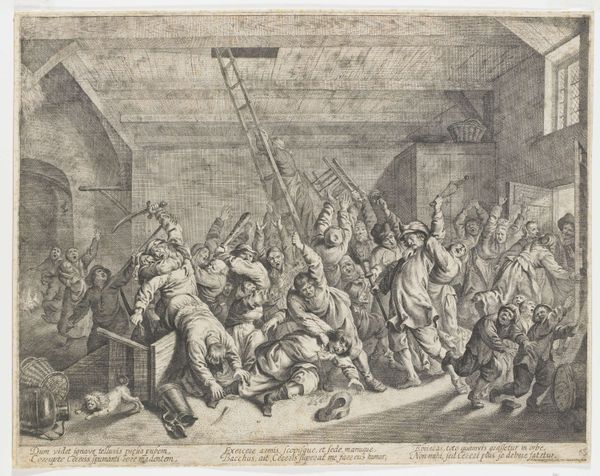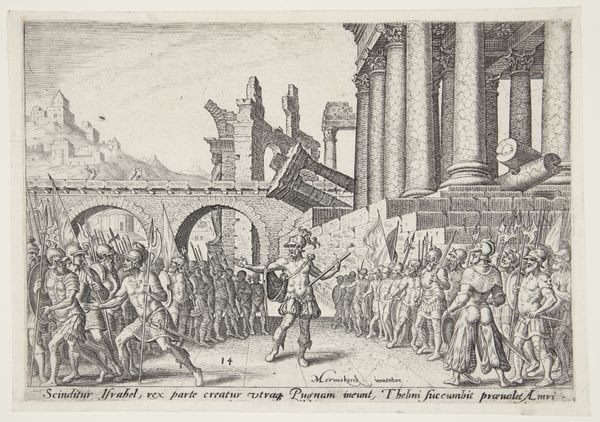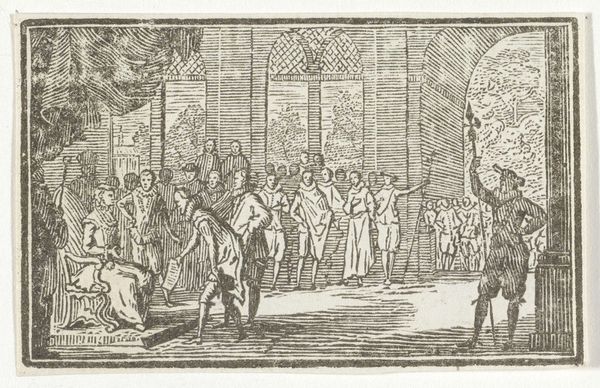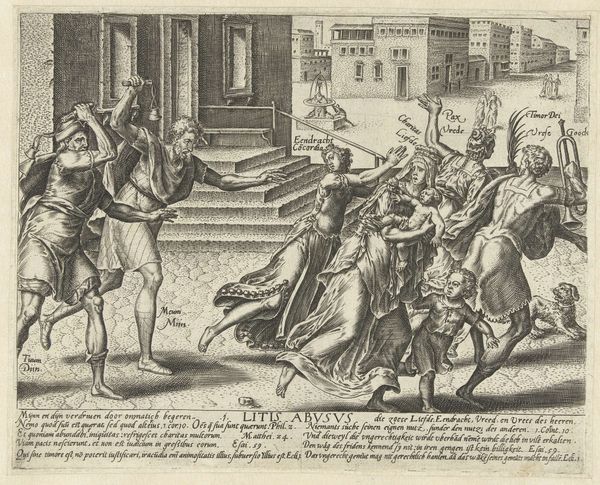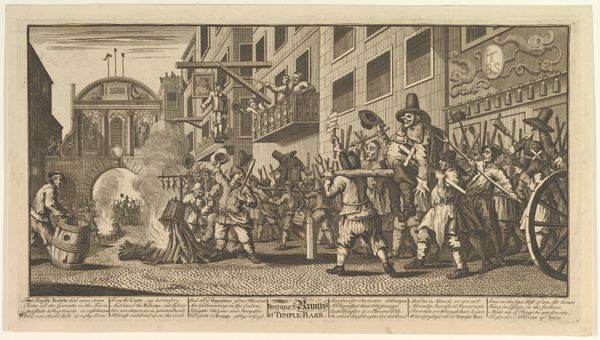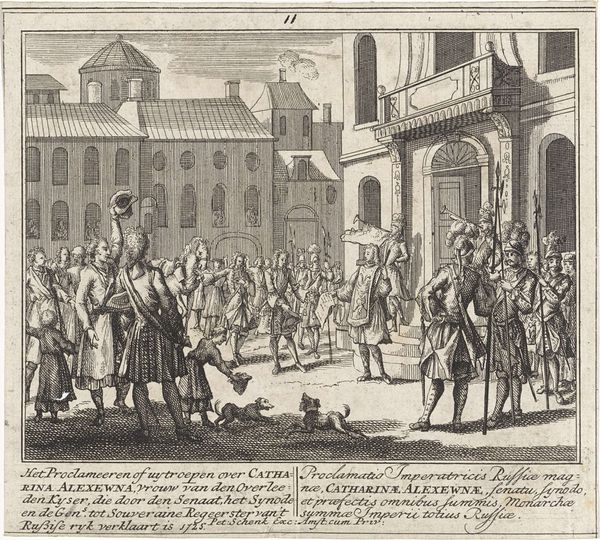
print, engraving
#
narrative-art
#
baroque
# print
#
old engraving style
#
figuration
#
historical photography
#
line
#
history-painting
#
engraving
#
realism
Dimensions: height 156 mm, width 198 mm
Copyright: Rijks Museum: Open Domain
Curator: Looking at this piece, I'm immediately struck by the overwhelming sense of chaos and violence. It feels…claustrophobic, despite being an outdoor scene. What's your take on it? Editor: That immediate impression is entirely understandable. We are looking at an engraving titled "Gevangenneming van Johan de Witt, 1672," created in, unsurprisingly, 1672. It's an anonymous piece from the collection of the Rijksmuseum, capturing a pivotal moment in Dutch history. Curator: Right, the murder of Johan de Witt. It's the visual vocabulary of political assassination that interests me. How the artist has chosen to represent this…moment of state-sanctioned violence, and how it resonates through time. Editor: Indeed. The symbols here are powerful. Look at the frenzied mob, a sea of pointed rifles and angry faces surrounding the central figures of Johan and Cornelis de Witt. Note how the gate looms, the stark shadows of it almost caging them in anticipation. There is no escaping fate in this depiction. The anonymous creator clearly intended this symbolism to echo with those of classical tragedies and Biblical themes. Curator: The choice to depict this event in print form is also telling. Prints democratize information, spreading visual narratives and shaping public opinion in a way paintings for elite patrons simply couldn’t. This engraving would have fueled the existing political passions, served as a form of propaganda, immortalizing a violent event in popular consciousness. Editor: I also see it through the lens of enduring iconography. The iconography of a scapegoat is clearly communicated in the body language and expression of de Witt. Arms outstretched, it is such a blatant and emotional expression, signaling blame. What would have people at the time understood? How were their sentiments around governance, perhaps anger toward political decisions in particular? Curator: The De Witt brothers were scapegoats, certainly, for a populace frustrated by war and political turmoil. But this engraving served as more than just a record; it actively participated in constructing that narrative. The artistic decisions—the exaggerated violence, the framing, the anonymous creation itself—all serve a particular agenda. Editor: The act of anonymity actually heightens the symbolism for me. To not take ownership actually echoes a feeling of it representing something greater. Not just the death of one person. And now it echoes down through time, as an iconic scene. Curator: Well, considering the sensitivity and gravity of the topic, taking ownership could have been perceived to some degree as taking sides or responsibility. Thank you for highlighting that point, it has altered how I interpret the agency of this piece. Editor: Of course. These images continue to reverberate because of these multifaceted layers of intention and artistic implementation, allowing future generations to feel these impactful events.
Comments
No comments
Be the first to comment and join the conversation on the ultimate creative platform.
